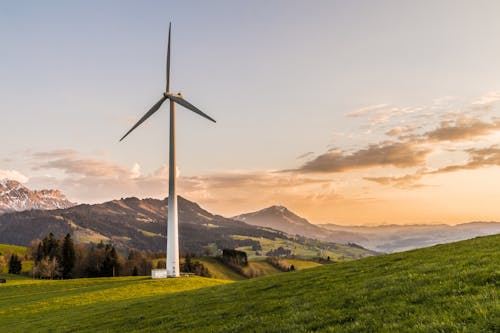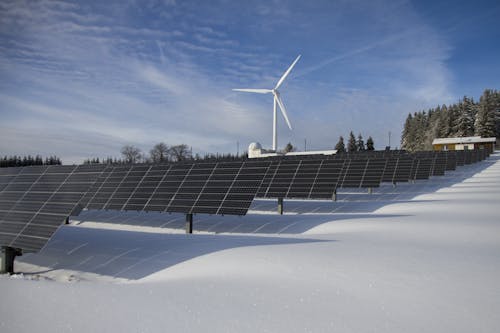New Energy, New Economic Models
The transition to green energy is no longer a distant idea or niche policy—it’s a global movement shaping investment decisions, political agendas, and industrial strategies. At the heart of this shift lies a critical question: Can the shift to clean energy sources not only protect the planet but also stimulate economic growth?
While skeptics focus on job losses in fossil fuel industries and the costs of new infrastructure, the broader picture tells a different story. Renewable energy is not just about emissions; it’s about reshaping economies, creating new sectors, and redefining what it means to grow.

Investments Are Changing Direction
Public and private investment are steadily flowing into green energy infrastructure—from wind farms and solar parks to electric vehicle production and smart grids. Countries like China, the United States, and members of the EU have made clean energy a pillar of their long-term growth strategy.
These investments do more than build turbines or solar panels—they stimulate entire supply chains. That includes battery manufacturing, rare earth mining, engineering services, software development, and logistics. What starts as an environmental policy often ends as a driver of economic complexity and competitiveness.
Job Creation in Renewable Sectors
One of the strongest arguments for green energy as an economic engine is its job potential. While coal mining and oil extraction have traditionally been labor-intensive, the renewable sector is proving to be no less active in employment.
Solar panel installation, wind turbine maintenance, energy auditing, and retrofitting buildings for efficiency require skilled labor. In fact, renewable energy jobs are growing faster than many traditional sectors in both developed and developing countries. These are not just technical roles—management, finance, marketing, and research positions are also expanding in clean tech industries.
Moreover, unlike fossil fuels which are often centralized, green energy jobs tend to be decentralized, bringing employment to rural areas and smaller cities where wind and sun resources are most abundant.
Local Economies and Energy Independence

Shifting to renewables can also keep energy spending closer to home. Instead of importing oil or gas, countries can produce their own power from local sources—be it sunlight, wind, biomass, or geothermal heat. This reduces trade deficits, improves energy security, and retains more capital in national economies.
On a smaller scale, local ownership models—like community wind cooperatives or rooftop solar on residential homes—generate revenue that circulates within communities. In agricultural regions, leasing land for wind turbines offers farmers a steady income stream that can help stabilize rural economies.
Technological Spillover Effects
Green energy is tightly linked to innovation, not just in power generation but across sectors. The push for better batteries, lighter materials, and more efficient transportation has sparked advances that extend well beyond the energy industry.
Electric vehicles have revolutionized the auto sector, giving rise to new companies and forcing legacy players to reinvent themselves. Smart grids and digital metering require new software, data analysis, and cybersecurity tools. Buildings are becoming micro-power plants, feeding energy back into networks and creating two-way value flows.
These spillovers generate productivity gains, create new markets, and often lead to entirely new business models. In this way, green energy is not just an environmental fix—it’s a trigger for broader industrial evolution.
Challenges in the Transition
Despite its promise, the shift isn’t without costs. Transitioning away from fossil fuels does displace workers and strain certain regions that rely on coal, oil, or gas extraction. This makes a just transition—where governments invest in retraining, relocation support, and economic diversification—essential for stability.
Infrastructure also remains a major hurdle. Building a reliable, renewable-based power grid requires enormous coordination, new storage technology, and investment in transmission lines. Green energy is intermittent, and without careful planning, it could strain old systems.
Affordability is another factor. While solar and wind are becoming cheaper, the upfront costs of installation, battery storage, and new energy-efficient appliances can be a barrier—especially in low-income regions. Financial instruments and policies must be designed to make the green transition accessible to all.
Policy and Regulation Shape Outcomes
How green energy drives growth depends largely on the policies that surround it. Carbon pricing, renewable energy targets, subsidies for clean tech, and penalties for pollution all shape the playing field.
Countries that take a proactive stance—supporting research and development, investing in public infrastructure, and offering incentives—tend to attract private capital and accelerate the economic benefits. Regulatory stability is key; businesses invest where they see long-term policy commitment.
At the global level, trade in clean energy technology is rising. Countries that establish themselves as leaders in manufacturing solar panels, wind turbines, or electric vehicles can gain not only domestic growth but also export advantages.
A Broader Definition of Growth
Perhaps most importantly, the rise of green energy invites a rethinking of growth itself. Traditional measures like GDP may not fully capture improvements in air quality, public health, or energy security—all of which have economic value.
Lower pollution leads to fewer sick days and lower healthcare costs. Reduced dependency on volatile fossil fuel markets shields countries from price shocks. Cleaner cities attract tourism and talent. These factors, though harder to measure, matter deeply to long-term prosperity.

Momentum Is Building
The transition to green energy is no longer a theoretical choice—it is a practical path being pursued by governments, corporations, and individuals worldwide. It brings new industries, new jobs, and new ways of organizing economic life.
Whether this transition succeeds as a growth engine depends not just on technology or markets but on coordination, vision, and inclusion. The potential is there, not just to power homes and factories, but to recharge economies in ways that are cleaner, more resilient, and more equitable.





